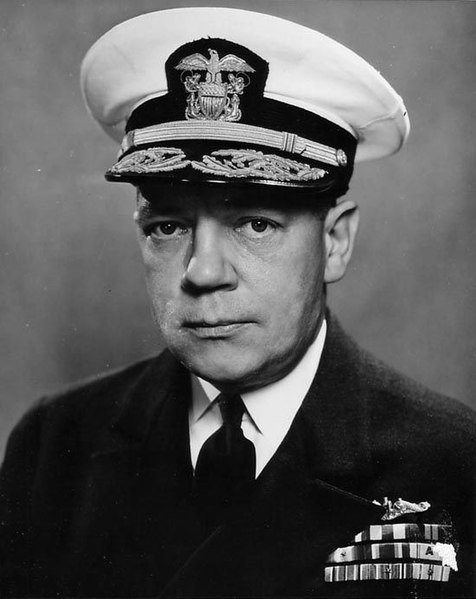Francis Stuart Low CBE was a decorated officer of the United States Navy with the rank of four-star Admiral. An expert in submarine warfare, Low is credited with the idea that twin-engined Army bombers could be launched from an aircraft carrier. This idea was later adopted for the planning of the Doolittle Raid.
Adm. Francis S. Low, USN
Low (extereme left) during the surrender of Japanese Forces in Southern Korea: U.S. delegates Admiral Thomas C. Kinkaid and Lieutenant General John R. Hodge sign surrender documents, September 9, 1945.
Low (right) with Admirals Nimitz (second from right) and Lockwood during the visit of submarine Nautilus in June 1957.
Image: Submarine Officer badge
The Doolittle Raid, also known as Doolittle's Raid, as well as the Tokyo Raid, was an air raid on 18 April 1942 by the United States on the Japanese capital Tokyo and other places on Honshu during World War II. It was the first American air operation to strike the Japanese archipelago. Although the raid caused comparatively minor damage, it demonstrated that the Japanese mainland was vulnerable to American air attacks. It served as an initial retaliation for the December 7, 1941, attack on Pearl Harbor, and provided an important boost to American morale. The raid was planned by, led by, and named after Lieutenant Colonel James Doolittle. It was one of six American carrier raids against Japan and Japanese-held territories conducted in the first half of 1942.
Jimmy Doolittle and his B-25 Mitchell prior to taking off from the USS Hornet for the raid
Lieutenant Colonel Doolittle wires a Japanese medal to a bomb, for "return" to its originators.
A B-25 Mitchell taking off from USS Hornet for the raid
B-25 Mitchells aboard USS Hornet








